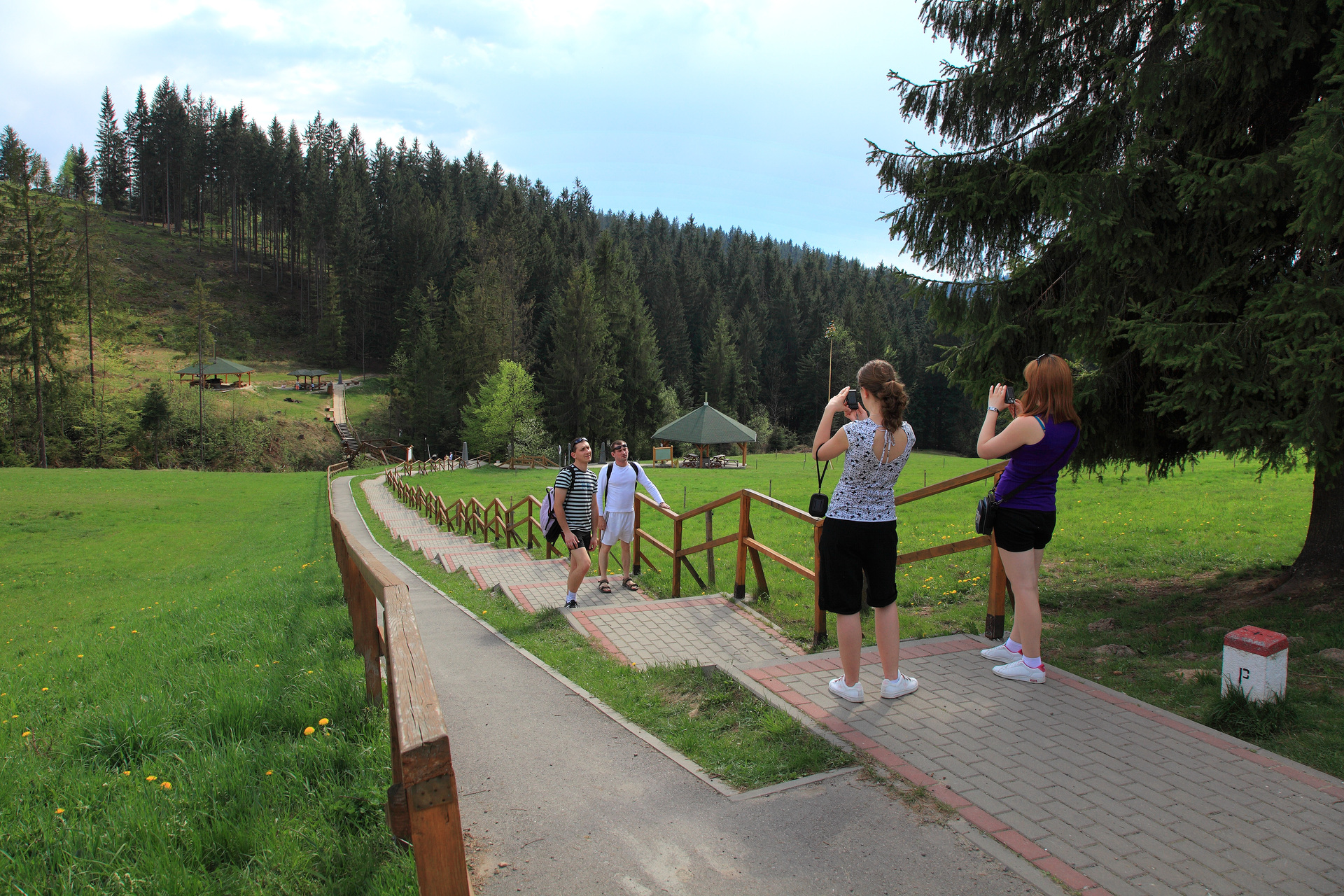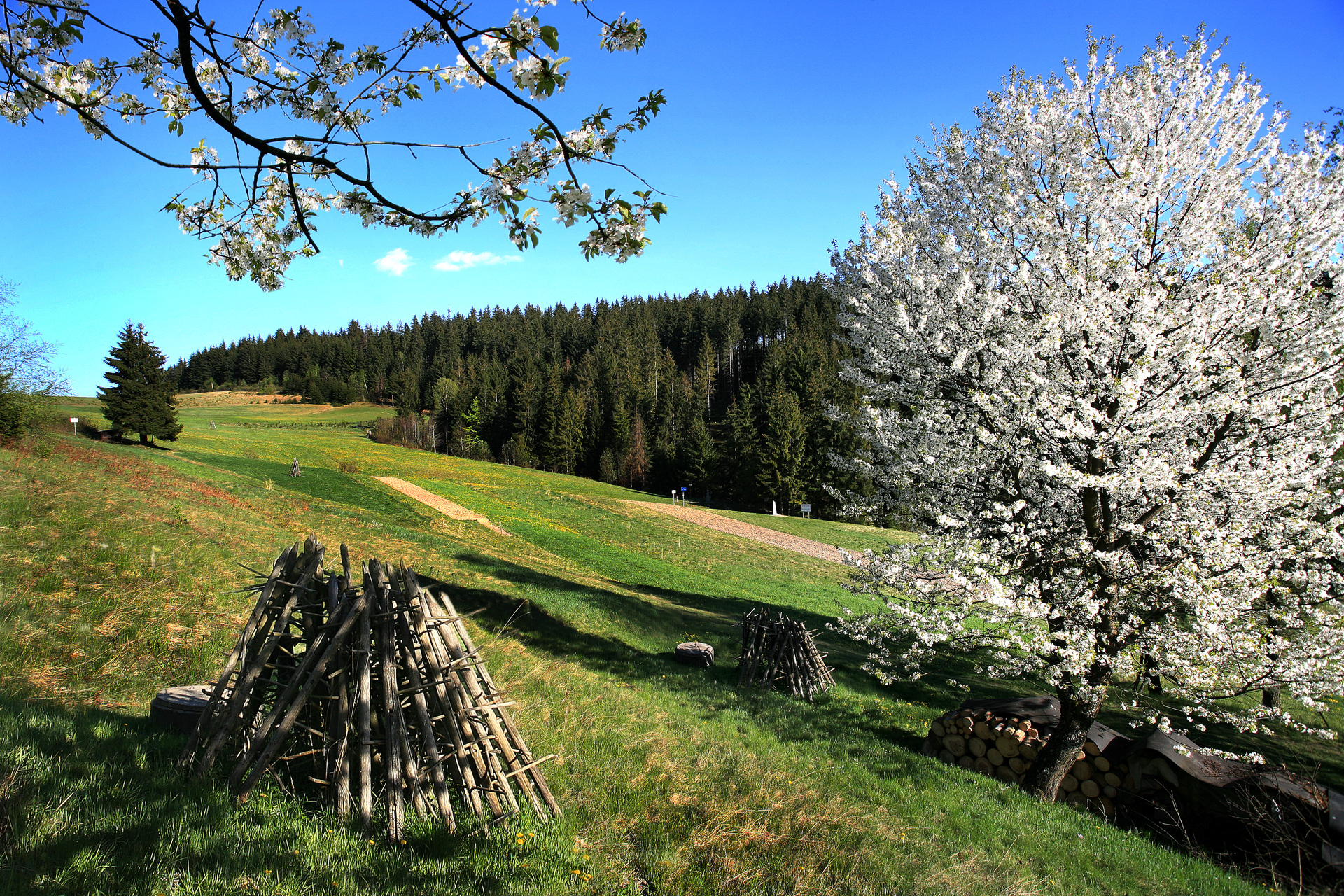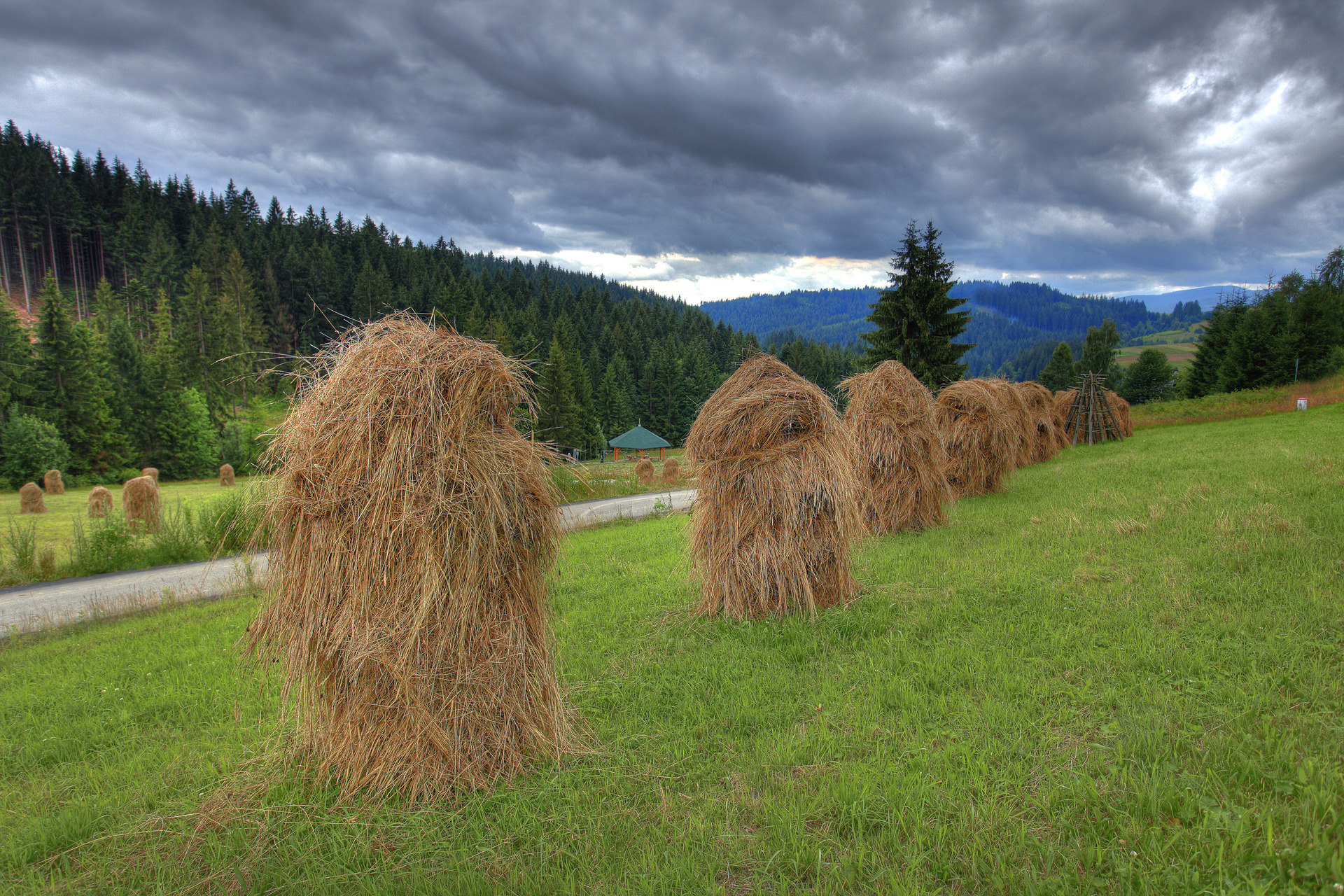Hrčava
At first glance, it is an ordinary mountain pasture with a stream flowing through it. A place like hundreds of them. However, the meadow behind Hrčava, a village hidden in the dense forests of the Silesian Beskydy Mountains, hides a unique place. The borders of three neighbouring countries, the Czech Republic, Poland and Slovakia, meet here.
The exact point where the borders meet lies in the bed of the mentioned stream and can be seen from the wooden bridge that connects the Czech and Slovak sides. A boundary stone is located in a small ravine. On each of the three sides there is a dignified two-metre high granite monolith with the symbols of each country. It is possible to sit in gazebos with campfires. The Trojmezí is a regular meeting place for the inhabitants of the three neighbouring villages.
The road from the Czech side, i.e. from Hrčava, leads between the wooden houses of the village, which lies on a plateau made up of meadows and fields. From Poland, people come to the Trojmezí from the village of Jaworzynka, and from Slovakia, a steep footpath leads here from the village of Čierna, which lies deep in the valley of the Kysuce River.
Hrčava was originally a defensive fortress that protected the Hungarians from Silesia in the 17th century. An old customs house still stands on the forest road between Hrčava and Jaworzynka, which protected the border mainly from smugglers.
Hrčava is adjacent to the village of Bukovec, which is the easternmost point of the Czech Republic. On the way to the Trojmezí you cannot miss the wooden church of Saints Cyril and Methodius, the youngest wooden church in the Moravian-Silesian region. The Lourdes Cave with healing water is hidden in the woods near the church.
Contact
Gorolské turistické informační centrum
Mosty u Jablunkova 381
739 98 Mosty u Jablunkova
E-mail: info@gotic.cz
Web: http://www.gotic.cz/
Tel.: +420 558 341 586





